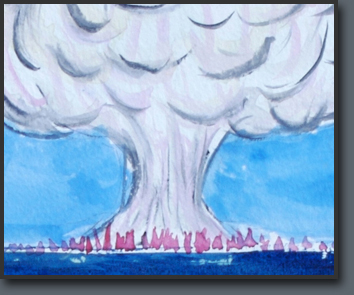![]()

HISTORY LESSON PLAN![]()
| For decades now, the survivors of Hiroshima and Nagasaki, like Keiji Tsuchiya featured in Witness to Hiroshima, have selflessly advocated for the abolition of nuclear weapons, saying that not one more human being should have to endure the horror, loss, and trauma they did. The cornerstone of hibakusha (survivor) appeals is their individual testimonies. As difficult as it is to repeatedly relive such painful memories, many continue to tell their stories to students in schools and universities as well as to the general public in Japan and abroad. By listening to them and further educating ourselves, we not only pay respect to the survivors but also take a meaningful step towards securing a peaceful future. (You can find additional testimonies at the Peace Memorial Museum website.) Another important step one can take is to re-examine what we have been taught about why the United States dropped the atomic bomb on Hiroshima and Nagasaki. Numerous once-top-secret government documents are now available to the public for study. Reputable historians, who have carefully analyzed these primary documents, have discovered that the motivations behind the decision to drop two atomic bombs in 1945 are more complicated than most widely accepted ideas. Thorough study of such documents brings into question certain historical “truths” (e.g. “the Japanese would never have surrendered”), which need to be revisited. Below, we offer some materials, questions, and background information that can be used as a stand-alone unit, in conjunction with Witness to Hiroshima and/or other historical materials. |
|
| Grade Levels: | |
| 9-12 and college/university | |
| Subject Areas: | |
| U.S. History, Japanese History, World War II, Asian Studies, Peace and Conflict Studies | |
| Materials: | |
| · Copy of Witness to Hiroshima · Primary Source History Documents · Access to Internet for student research |
|
| Download the lesson plan: | |
| Shedding New Light (PDF) History Documents (PDF) |
|


